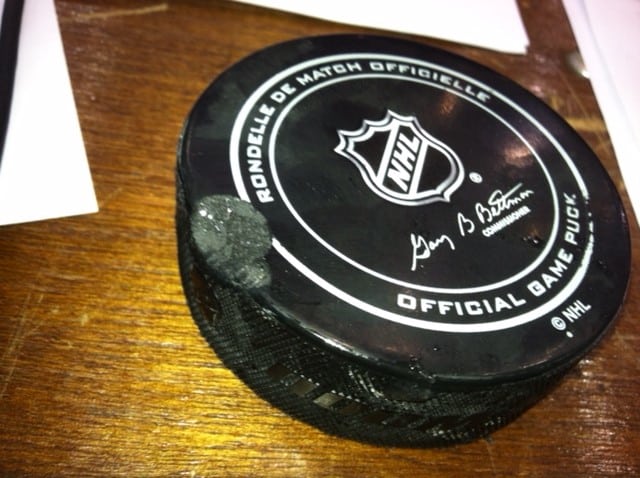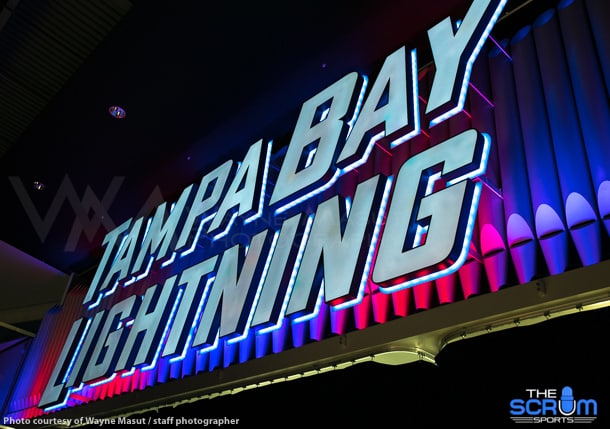
Earlier this week, all 31 of the NHL’s general managers (yes, I said 31, as Vegas is now officially a franchise after finishing their final expansion payment) gathered in Boca Raton, FL for the GM meetings to discuss the current state of the game and talk about possible rules changes they’d like to see implemented in the future. While much was discussed, not everything that was put out there for discussion will be changed up for next season. We’ll take a deeper look into the GM meetings and what’s being discussed about each team’s expansion draft lists in the latest edition of Around The NHL.
GM MEETINGS COME TO A CONCLUSION IN BOCA RATON
One of the biggest topics up for discussion at the GM meetings was the coach’s challenge for offside reviews and whether or not to actually change the offside rule to allow for fewer overturned goals due to video review. After some discussion in their meetings, the GM’s decided that there was no reason to actually change the rule itself. According to NHL.com:
“Before reaching that conclusion, the GMs discussed changing the offside rule (Rule 83.1) to allow for a player to be considered onside as long as one of his skates has broken the vertical plane of the blue line regardless if it is in contact with the ice.
The basis of the offside rule, which dates to 1929-30, dictates that a player is judged to be onside when either of his skates is in contact with or on his own side of the blue line at the instant the puck completely crosses the leading edge of the blue line.”
The same article also mentions how through 972 games this season, there have been 29 goals challenged by coaches who believed that the play was offside due to a player’s skate being in the air. Only nine of those goals were overturned. Besides those numbers, the general managers felt that there were two main reasons not to change the offside rule:
“First, officials still would have to determine if a player’s skate in the air was over the blue line, which can be as subjective as determining if a skate is on the ice.
“It’s just changing the dynamic,” Chiarelli said. “Now you have to determine the dynamic if the leg is breaking the plane or not if it’s in the air. So you’ve got a number of calls that were reversed because the leg was in the air. But if you allow it, you still have to decide if it’s breaking the plane. So there’s uncertainty on both sides.”
Second, it could encourage players to lift their skates, which could impact player safety.
“Skate cuts can be nasty, so we’re trying to keep the players’ skates on the ice at all times,” Minnesota Wild GM Chuck Fletcher said.”
So if you were hoping the league would change up the offside rule for the sake of the coach’s challenge, it’s not happening.
NHL LOOKING AT TWEAKING BYE WEEK FORMAT AND RECOMMENDS CHANGE FOR TIMEOUT RULE
Another big item on the league’s agenda during the GM meetings was the bye week and its impact on the entire league. This year’s schedule was already compressed due to the World Cup of Hockey, and the addition of the bye week, a league-mandated period of five days off for each team during the season, compressed it even further. In addition, everyone’s bye weeks were spread out, so some teams had a few games in hand on other division rivals. What was most concerning, however, was the fact that only four teams coming off their bye week (N.Y. Rangers, Toronto, Vancouver, and San Jose) played the first game back from their break against another team also coming off its bye week. Overall, teams were 10-16-4 in the first game they played after their respective breaks.
The bye weeks were negotiated by the NHL and NHLPA for a two-year period in return for having a 3-on-3 tournament at the All-Star Break. The players don’t mind them at all because they get a vacation in the middle of the season, but the coaches and general managers don’t like them because they cut into practice time, as well as the issue of player safety and fatigue due to the condensed schedule. The league is looking at setting up next season’s bye weeks so that half the league takes its bye week at once and then those teams play each other in their first couple of games back so that everyone is on equal footing. Then the other half of the league would take its bye week after that.
One change that could be on the horizon is whether or not a team can call a timeout following an icing. The general managers recommended a rule change that would not allow a team to call a timeout after icing the puck, thus forcing them to continue using tired players and giving an edge to the opposing team in the offensive zone. The rule change would need to be approved by the Competition Committee and the NHL Board of Governors before it becomes an official rule. Don’t be surprised if there’s some opposition from the players’ union, as they have representation on the Competition Committee and could argue that it affects player safety.
NHL HAS DISCUSSED MAKING EACH TEAM’S EXPANSION LISTS PUBLIC
The expansion draft is set for June 21, and teams must submit their final list of protected players to the league office by no later than 5 pm EST time on June 17. Vegas Golden Knights GM George McPhee was probably a popular guy at the GM meetings, as his team is now officially open for business and can make transactions. In fact, they already signed the first player in franchise history, Reid Duke, to a three-year entry-level contract. The other 30 general managers would probably prefer to keep their list of protected players private for the sake of not inviting any further scrutiny on themselves, but there’s a chance that those lists could be made public. Colin Campbell, the NHL’s senior executive vice-president of hockey operations, has said that there have been discussions on making the lists public:
“The official answer [at the GM meetings] was, ‘it looks like we’re going to keep them private,'” Campbell told Sportsnet’s Bob McCown and John Shannon. “The unofficial answer was, ‘nothing’s private, and it’s going to get out.’”
So, why not make them public to begin with?
“They may be. They’re going to discuss it. They may be, because of that—it’s going to get out, you know it’ll get out there,” Campbell explained.
When asked if the league would take it a step further and consider making it into a television event, Campbell said, “It’s possible, yes.”
This is a no-brainer to me. Professional sports aren’t like most jobs. It’s a very public enterprise. It’s a form of entertainment and its fans crave information. They wanna know which players on their teams are being protected, which ones are being exposed in the expansion draft, and the reasons why. Players that are on the bubble probably would like to know ahead of time whether or not they’re going to be exposed and whether or not they end up actually relocating to Las Vegas for next season. When you’re the first of the four major North American pro sports leagues to put a team in Las Vegas, why not have the expansion draft on TV? Especially when it could bring plenty of exposure for a new market and provide the league a chance to make a little extra advertising revenue with a made-for-TV event. Hockey Twitter would lose its mind over the expansion draft being televised. CapFriendly.com, a popular website for looking up each team’s salary cap information, also has an expansion draft tool on its site that has been a huge hit with fans.
We’ve surpassed 30,000 Expansion teams created since we launched the tool back in November. https://t.co/1hFJB0imyq
— CapFriendly (@CapFriendly) March 8, 2017
NHL general managers are already under intense scrutiny. What’s a little bit more when it comes to the expansion draft?




